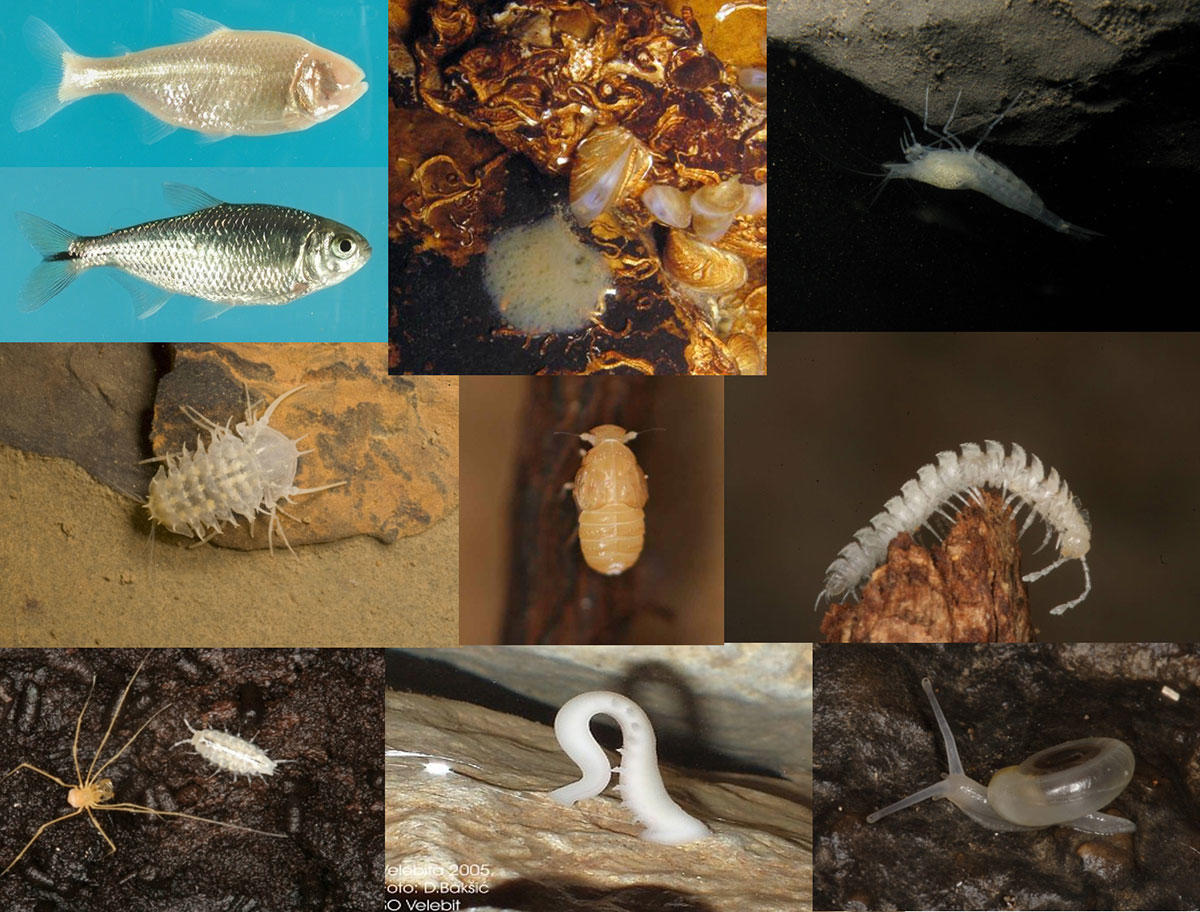Funded by the program “Research Excellence Program in Science and Higher Education - the Tenure Track Pilot Program” (TTP) designed to support excellent young researchers to establish their own independent research groups. Program is administered by Croatian Science Foundation and Swiss partner École Polytechnique Fédérale de Lausanne.
Project Objective
Objective of the project is to establish an independent research group and lab. Research group will consist of PI, technician, 2 doctoral students and 2 postdoctoral researchers. All group members will be hired within the first year of project implementation.
In addition to lab space, group will have animal facilities for maintenance and breeding of research organisms adapted to caves: teleost fish Astyanax mexicanus and various invertebrates such as cave planaria, cave mollusks (e.g. cave clam Congeria kusceri), cave arthropods (e.g. cave collembola, isopods, shrimp etc.).
Scientific Objectives
How organisms adapt to new environment and generate novel phenotypes are fundamental questions in biology. Cave adapted animals offer outstanding opportunities to answer them because the cave environment is simple, novel phenotypes evolved convergently in different phyla, and surface dwelling relatives resembling the ancestral form are available for comparative studies. We will integrate molecular, cellular, and organismal approaches to 1) explore the effect of the environment and 2) investigate the molecular origin of a major evolutionary adaptation.
- By exposing closely related surface relatives to constant darkness in controlled laboratory conditions we can identify the adaptations in the cave forms that evolved due to the lack of light - the major feature of caves. Our previous research on the fish Astyanax mexicanus showed that traits considered as cave adaptations (e.g. metabolism) can be induced by exposing the surface form to darkness. We will investigate i) the molecular mechanisms that underlie these phenotypic changes in Astyanax surface fish and ii) whether darkness would induce similar changes in closely related surface relatives of cave adapted invertebrates (e.g. arthropods, planaria).
- One of the hallmarks of cave adaptations is the loss of pigmentation, present almost ubiquitously in all groups regardless of the type of pigment they synthesize. Our previous research identified a relevant molecular change in multiple cave animals with melanin pigmentation, and that natural selection as opposed to drift may be involved. However, the exact genes and mutations that control this trait remain elusive. Also, nothing is known about the other pigments that are lost in cave animals. We will investigate the molecular and evolutionary mechanisms of albinism across different animal groups and the types of pigment they use.
We will integrate experimental procedures across biological disciplines (molecular to organismal), using diverse organisms (carefully selected from planarians to vertebrates) from diverse environments (cave and surface, terrestrial and aquatic), and applying various methodological approaches (from laboratory to field). Insights from these studies would provide new understanding of the mechanisms of convergent evolution and the genetic origin of novel phenotypes.
Further Reading



